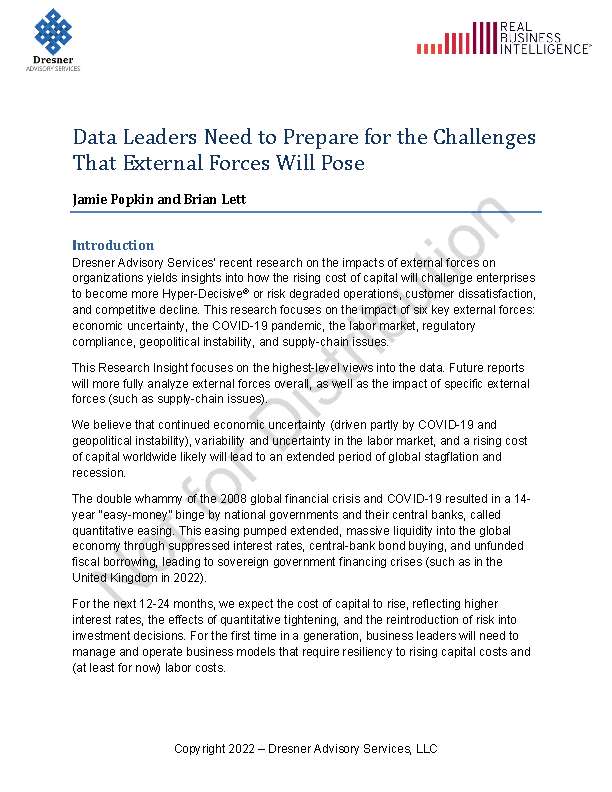
Dresner Advisory Services’ recent research on the impacts of external forces on organizations yields insights into how the rising cost of capital will challenge enterprises to become more Hyper-Decisive® or risk degraded operations, customer dissatisfaction, and competitive decline. This research focuses on the impact of six key external forces: economic uncertainty, the COVID-19 pandemic, the labor market, regulatory compliance, geopolitical instability, and supply-chain issues.
This Research Insight focuses on the highest-level views into the data. Future reports will more fully analyze external forces overall, as well as the impact of specific external forces (such as supply-chain issues).
We believe that continued economic uncertainty (driven partly by COVID-19 and geopolitical instability), variability and uncertainty in the labor market, and a rising cost of capital worldwide likely will lead to an extended period of global stagflation and recession. For the first time in a generation, business leaders will need to manage and operate business models that require resiliency to rising capital costs and (at least for now) labor costs.
The external forces that have emerged are powerful and likely will continue to affect the business cycle longer and more intensely than many expect because they have not experienced it in their careers . . . yet. As such, most data leaders now face unprecedented challenges—including intense pressure on business leaders. To best find advantages and opportunities and overcome these challenges, executives and strategic plans increasingly will require leveraging the competencies and capabilities in the Dresner Advisory Services Hyper-Decisive Maturity Model. Hyper-decisive organizations will have an edge.
External forces provide data leaders with a clear call to improve data sources and quality, and invest in advanced analytics. But data leaders should not lead this C-level discussion with BI. Instead, they must start the conversation by showing how the combination of data and analytics approaches, competencies, literacies, processes, tools, management, and governance supports specific business objectives and enables achievement of specific business outcomes.
You do not have permission to access this document. Make sure you are logged in and/or please contact Danielle with further questions.